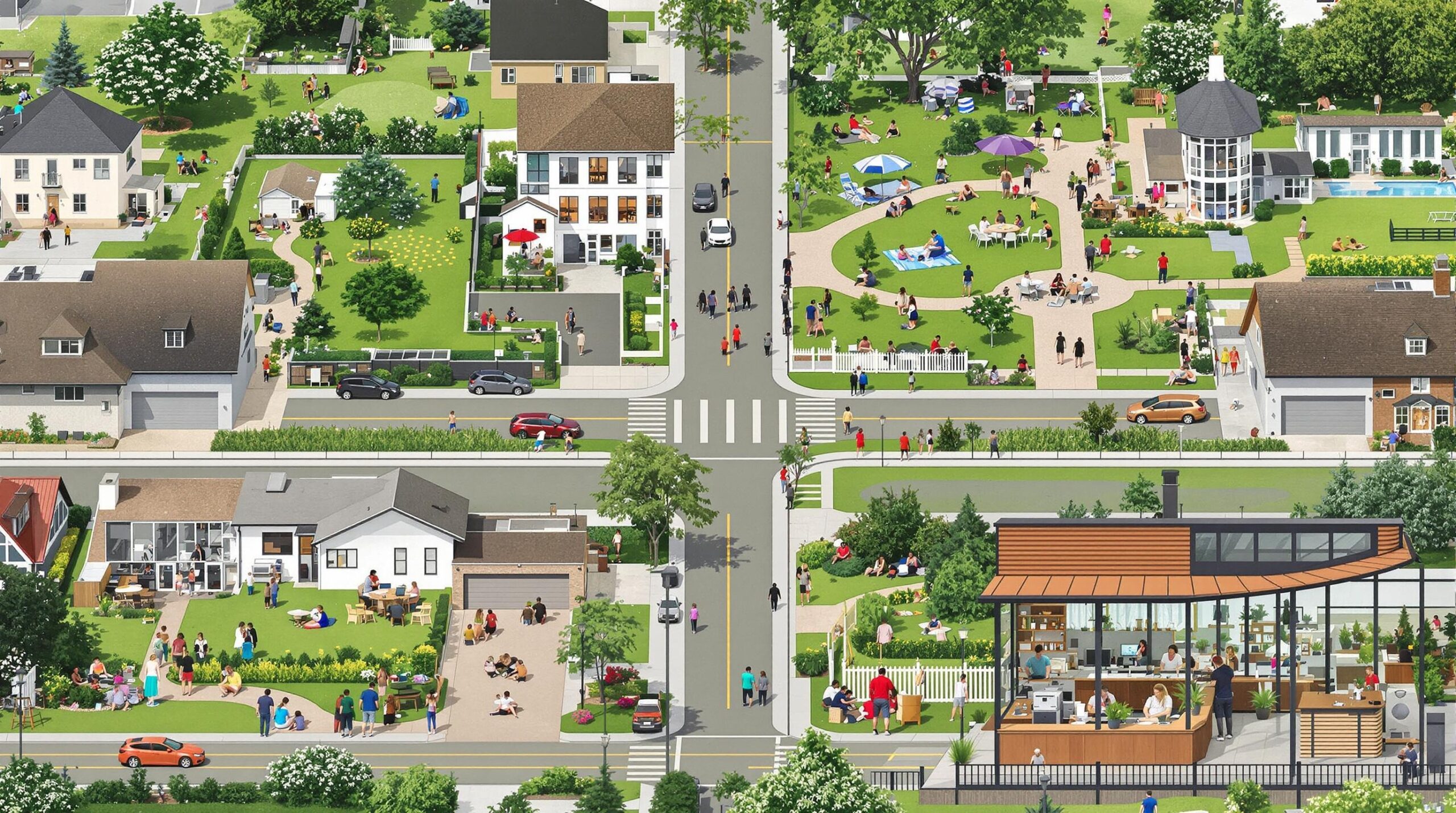The work landscape has shifted dramatically in the wake of widespread remote and hybrid job arrangements. These changes have spurred a revolution in where and how Americans choose to live. The result is a profound transformation of many suburban real estate markets nationwide.
Why Remote Work Changed Housing Preferences
Employees untethered from daily commutes have reassessed their housing needs and locations. With fewer reasons to live near city centers, people gravitate toward larger homes and more spacious environments. Suburban areas offer greater affordability, larger living spaces, and proximity to nature, features highly valued in today’s remote work culture. Home offices and reliable connectivity top the list for buyers and renters alike. This demand has altered the suburban real estate landscape in notable ways.
Soaring Demand in Suburban Markets
The pivot to remote work has driven remarkable demand in suburban housing markets across the United States. Many suburbs saw a significant rise in home prices, higher rental rates, and diminished inventories. Cities like Austin, Charlotte, and Nashville watched their surrounding suburbs grow rapidly as buyers sought more space and privacy. Financial analysts report an uptick in bidding wars, with many buyers waiving contingencies to secure homes. This heightened demand has sparked competitive conditions not usually found beyond urban cores.
Shift in Homebuyer Priorities
Remote work has triggered a redefinition of homebuyer priorities. Many families now view their homes as multifunctional spaces: offices, classrooms, gyms, and sanctuaries. Separate workspaces and dedicated home offices have become nearly as essential as kitchens and bathrooms. Fast, reliable broadband is a must, often determining whether a suburb is attractive to remote workers. Outdoor spaces and flexible floor plans also rank higher on buyers’ wish lists than urban amenities like proximity to nightlife. The interior design of new homes and renovations now often reflects these functional shifts.
Impact on Housing Supply and Construction
The rush to the suburbs required a swift response from homebuilders and developers. Many builders have scaled up suburban projects, including single-family homes, townhomes, and rental communities. Developers are designing modern communities with coworking spaces, walking trails, and shared outdoor areas to attract remote professionals. Construction timelines have lengthened, though, due to labor and material shortages. Supply chain disruptions and rising costs have complicated expansion, slowing the pace at which new inventory enters suburban markets. Nonetheless, builders continue to innovate, tailoring new neighborhoods to the demands of remote workers.
Rental Markets Respond to New Realities
The effects of remote work have not been limited to homeownership. Suburban rental markets have also experienced sweeping changes as urban renters seek more space and tranquility. Apartments with balconies, townhome rentals, and built-in office nooks now command premium prices. Landlords are upgrading high-speed internet access in existing buildings to appeal to tech-savvy tenants. Suburban rental rates have increased faster than in many urban downtowns, reversing longstanding trends. These dynamics have prompted investors to reconsider their portfolio strategies, targeting suburban multifamily developments.
Suburbia’s Evolving Infrastructure and Amenities
With more people living and working in suburban settings, local governments and businesses are adapting to new demand patterns. Suburban towns are enhancing parks, trail systems, and community recreation facilities. New retail, restaurants, and service providers have emerged to serve the growing workforce that spends more hours locally. Public transportation options are reimagined, often focused on convenience over commuting to distant downtowns. Coworking spaces, coffee shops, and childcare centers proliferate to serve the needs of remote employees. Civic engagement may rise as more people participate in suburban life throughout the workweek.
Economic and Social Effects on Suburban Communities
This migration wave has impacted the economic and social makeup of the suburbs. Rising home prices can lead to affordability challenges for existing residents. Some communities are experiencing increased diversity as newcomers arrive from different regions of the country. Local economies have benefited from increased spending at small businesses and service establishments. School district enrollments may swell, while demand for daycare and after-school activities grows. Community leaders and planners now face the challenge of welcoming growth while preserving the unique suburban character residents cherish.
Challenges for Suburban Homebuyers and Renters
The surge in suburban popularity has not been without drawbacks. Homebuyers often confront rising prices and low housing inventory, making competition fierce. First-time buyers and people with modest incomes may be priced out of desirable areas. Renters discover that suburban units fill quickly and landlords can command higher deposits. Some longtime residents worry about increased traffic, larger class sizes, and overtaxed infrastructure. Balancing growth with affordability and quality of life remains a key issue for policymakers and planners in most fast-growing regions.
Long-Term Implications for Urban and Suburban Markets
Remote work seems poised to remain a fixture of American life, leading experts to predict continued suburban real estate growth. Suburbs will compete to attract talent by investing in connectivity, amenities, and innovative housing solutions. Urban centers may reinvent themselves, offering distinctive experiences and hybrid workspaces that complement suburban life. Some predict a rebalancing, with people seeking both urban convenience and suburban comfort over time. How cities and suburbs adapt will determine the next chapter of American residential patterns.
Conclusion: A Lasting Transformation
The surge in remote work has triggered a transformation in suburban real estate markets across the nation. This trend influences how and where Americans live, work, and build community ties. If employers continue to embrace flexible policies, suburban neighborhoods will remain desirable destinations for years to come. By adapting to these evolving needs, suburbs can thrive, offering opportunity and renewed vitality to millions.

